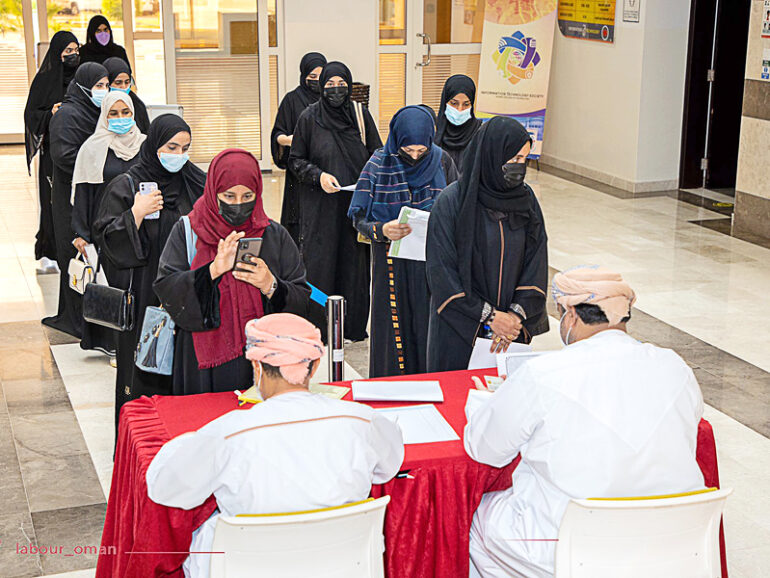 By
By
Muscat – Around the world, finding a job is much tougher for women than it is for men. When women are employed, they tend to work in low-quality jobs in vulnerable conditions, and there is little improvement forecast in the near future.
According to International Labour Organization (ILO), the current global labour force participation rate for women is just under 47 per cent while for men, it’s 72 per cent. That is a difference of 25 percentage points, with some regions facing a gap of more than 50 percentage points.
Data from the sultanate’s National Centre for Statistics and Information (NCSI) indicates the unemployment rate among women in Oman in June 2022 was 6.1 per cent compared to 0.9 among men. Musandam had the highest unemployment rate among women – 27.4 per cent – compared to 1.8 for men, followed by Dhahirah with 7.4 per cent for women compared to 1.1 for men.
The female unemployment rate in Muscat was 2.4 per cent compared to 0.3 for males.
ILO stated that women who want to work have a harder time finding a job than men.
‘This problem is particularly marked in Northern Africa and the Arab States, where unemployment rates for women exceed 20 per cent,’ stated the ILO InfoStory that highlights data behind the trends about the different barriers holding women back from decent work.
Balqees al Hassani, educator and president of Knowledge Oman, said, “One of the things that I feel is holding women back is inflexible hours. This impacts a women’s life, which must be balanced between work, career and parental care. I am not saying that men are not participating equally in childcare but women always play a dominant role in this area.”
She pointed out another factor hindering women’s growth – self-doubt, especially if she works in a male dominated field. “But there is also a positive side. A woman’s self-doubt can be turned into overall progress in her life and career. In Oman, we find women in senior positions, including the State Council, women CEOs and MDs,” Balqees added.
Gender roles and pressures to conform to roles for women vary across regions, religions and hou-seholds. ‘One way the pressure to conform manifests itself is thro-ugh marital status,’ ILO stated.
‘For instance, in developed and emerging economies, women who have a spouse or a partner are less likely to be employed in a paid job or be actively looking for one. This can often arise from the economic stability of a partner’s income that can reinforce the ‘male breadwinner’ bias in some marital arrangements,’ it added.
In developing countries the reverse is true – economic necessity gives women little choice but to work despite their marital status.
However, some women believe that there is no gender gap in employment and there is nothing holding them back. “I do not agree with the statistics because Omani women have gained their right to join the labour market. Woman in Oman are now doctors, teachers and ministers,” government employee Wadha al Saeedi said.
“I also believe that Omani women are actively developing and training themselves, but I admit that they are less fortunate when it comes to political engagement such as Majlis A’Shura and municipal elections,” she added.
© 2021 Apex Press and Publishing. All Rights Reserved. Powered by Mesdac